
“Creating to create is absolutely wonderful, but creating for a purpose changes how you create. It changes how you test; it changes how you ask questions of your own design. And it gives you a lot of joy in seeing how what you create impacts someone else.”
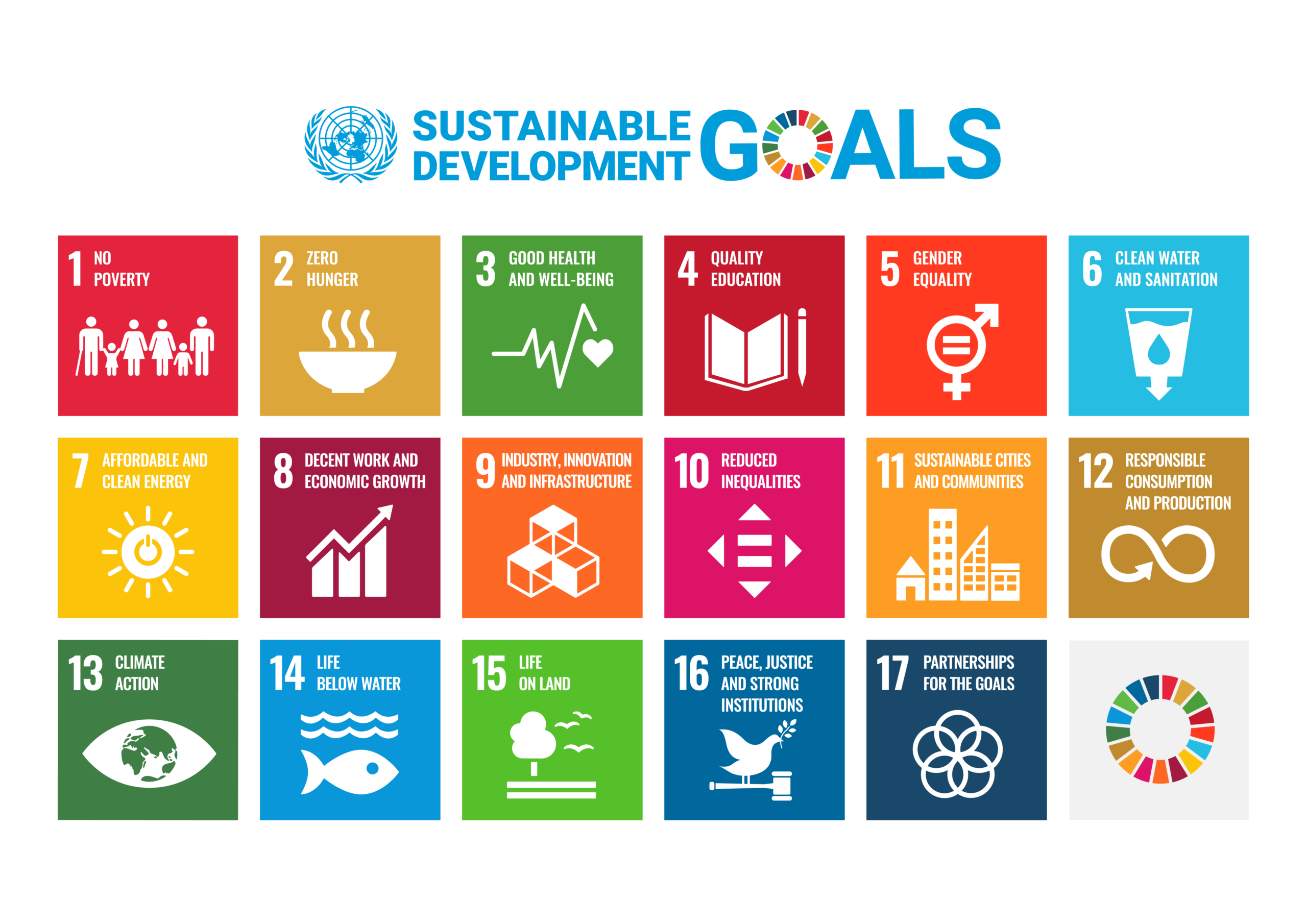
A grid of icons illustrating the 17 Sustainable Development Goals: No Poverty; Zero Hunger; Good Health and Wellbeing; Quality Education; Gender Equality; Clean Water and Sanitation; Affordable and Clean Energy; Decent Work and Economic Growth; Industry, Innovation, and Infrastructure; Reduced Inequalities; Sustainable Cities and Communities; Responsible Consumption and Production; Climate Action; Life Below Water; Life on Land; Peace, Justice, and Strong Institutions; Partnerships for the Goals.
At the time, I was working in a third grade classroom, and we were trying to figure out what our community members care about and how we could help them overcome challenges to access games. One of my designers had a younger sister who was visually impaired and in a wheelchair. This student took on this challenge and inspired her whole team to take on the challenge of creating an accessible game. We have 3D printers and we have games that people love. How could we make these games accessible to people who are older, or to people who have difficulty touching or feeling things?
One of the challenges her group chose was to take a Rubik’s cube and redesign it so that their classmate’s sister would be able to use it. They 3D printed different shapes on each side so that her sister could feel them, and they were all shapes that meant something to her sister. It really showed me at that moment how important it is for my students to design for someone else, and to experience that moment of sharing it.
“Design thinking needs to start with empathy. We need to ground it in our community and the needs of our community, because otherwise we’re just creating to create. There’s no harm in that, but I really want my designers to be purposeful about what they do.”
In the process of learning about the Sustainable Development Goals, a colleague shared the Ciena Solutions Challenge with me. I found the resources easy to access and they gave me the opportunity to differentiate projects that designers felt best met their problem while still using the same format for all of my designers. My designers focused on SDG 3: Good Health and Well-Being. To build background and excitement about the design challenge, I started with CodeJoy Robot Aerobics, a fantastic virtual show to launch the project.
Using the Ciena Solutions Challenge Engage: Empathize resources, designers started by identifying different example student projects from the Ciena Solutions Challenge Project Gallery. As they explored, I posed a few guiding questions to them: Which projects interest you or inspire an idea that you would like to pursue using technology resources? Whom in the community will you impact? How will you find out what problem you need to focus your design to solve? What are the interview questions that you will ask to learn more about the person’s needs? Whom will you reach out to? Research as much information as possible about solutions similar to your idea. What is already out there? We then focused on doing empathy interviews with community members and finding research that established a need for the action. With Sustainable Development Goal 3: Good Health and Well-Being, many of the ideas focused on either physical or mental health.
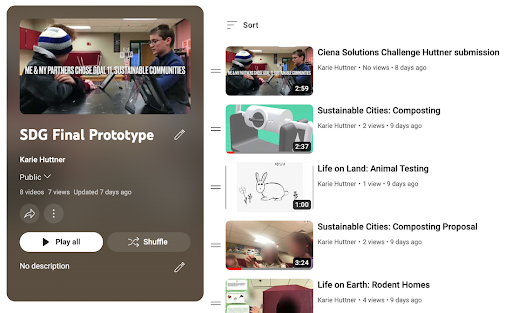
Sustainable Development Goals inspired Final Prototypes Playlist.
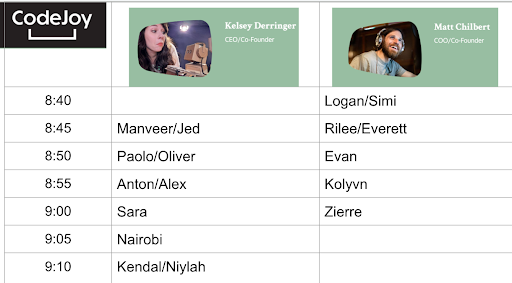
Student connections with CodeJoy.
These conversations pushed the student designers to think about other potential solutions and go deeper with their own ideas. It was powerful to work with the team from CodeJoy and have them say, “Okay, tell me more. That’s really awesome.” For students to have that connection with someone across the country or even within our community that is celebrating their ideas and designs and asking follow up questions to guide them — that’s meaningful. I don’t want my students to design for me as the classroom teacher. I want them to authentically design for the purpose of whom they have chosen. It was amazing for them to feel heard by people outside the classroom who are also designers.
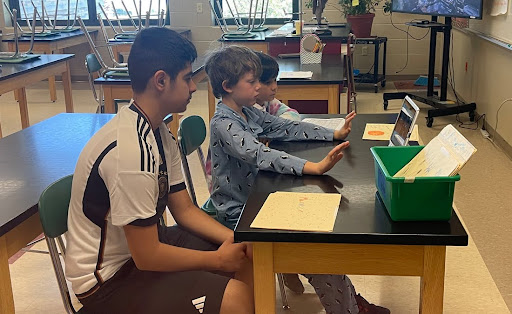
Students connecting with CodeJoy team.
Students walked away excited about their next steps and feeling really heard as designers. I think it’s important to know that someone is hearing what you’re saying and then giving you constructive feedback to push you a little bit further to design and to think about whom you’re designing for. Designers then took their projects and started to bring them to life through their first prototypes based on conversations with Matt and Kelsey from CodeJoy and feedback from their younger partners.
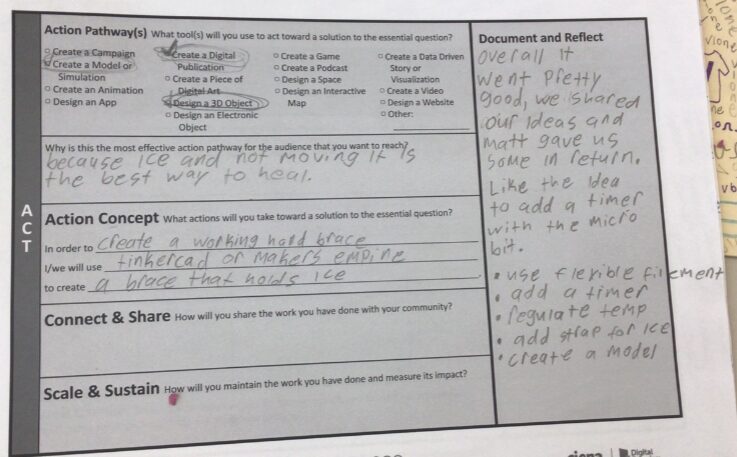
An Action Pathway worksheet from the Ciena Solutions Challenge
“The collaboration piece between the younger and the older students has been one of the greatest pieces of our maker movement, because when you’re in a space and you’re trying different things, there’s always someone else in the room who’s trying something that you can work off of. That synergy has really impacted what we do and how we reach out to the community.”
The final part of the project was sharing designs with a larger audience. One team presented to the YouthMADE Festival while other teams shared their final project and process in a documentary video.
I look forward to how these projects evolve over time because grounding design in empathy and the community has created thoughtful designs that have purpose.